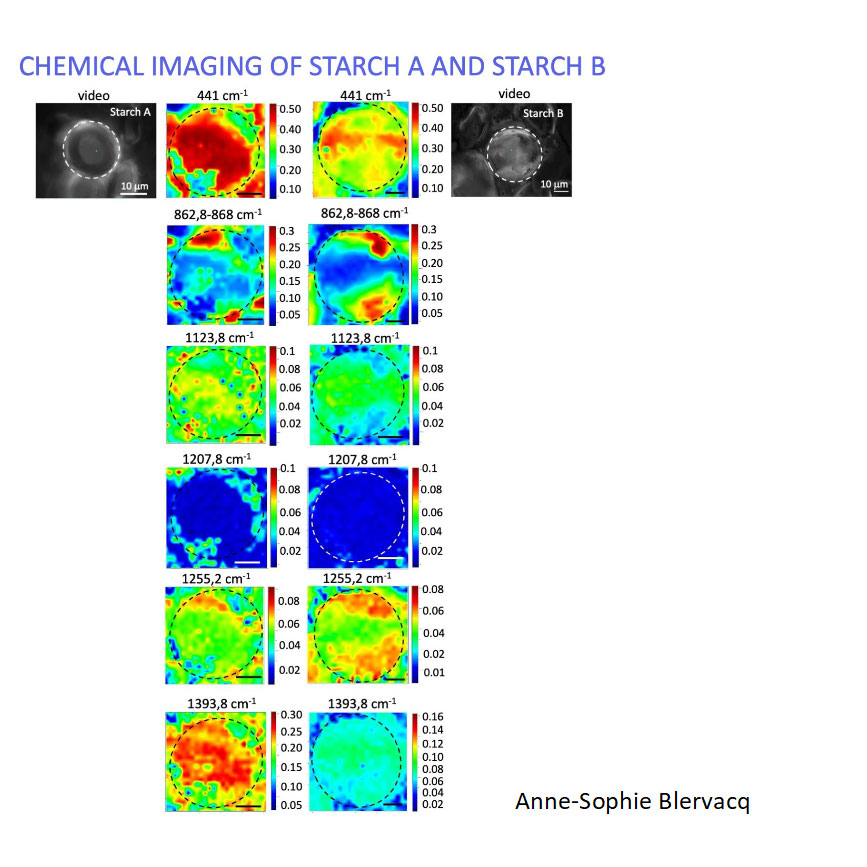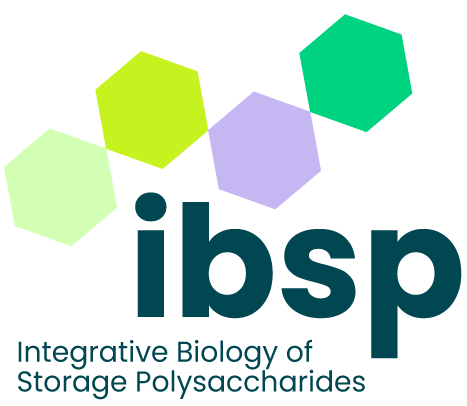Our Research
Research Focused on Reserve Polysaccharide Biology
The IBSP team (Integrative Biology of Reserve Polysaccharides) aligns its work with the strategic axis “Energy Storage Polysaccharides” championed by the UGSF unit for the 2026–2030 period. Our research aims to elucidate the metabolism, structure, and regulation of reserve polysaccharides, particularly starch, to explore their evolutionary diversity, and to understand their response to abiotic stresses such as temperature or light.
This work is particularly relevant in the context of ecological, food, and energy transition, where polysaccharides are expected to play a major role in food security, the valorization of plant biomass, and the development of sustainable biomaterials.
The IBSP team’s work is structured around four major fundamental biological questions, which form the foundation of our scientific approach.
In parallel, we develop cross-cutting and exploratory projects, with a strong technological or interdisciplinary component, which enrich our understanding and open up new application perspectives.

1 / Initiation of Starch Synthesis
This process involves both the de novo synthesis of carbohydrate chains (priming) and their spatial organization (nucleation) to form a semi-crystalline granule. We study the proteins involved in these early stages. Our approach is based on a diversity of biological models, including

2 / Polysaccharide Phase Transition
This is the conversion of soluble glucans into semi-crystalline starch. This complex phenomenon involves

3 / Influence of Abiotic Stresses on Starch Metabolism.
Temperature is a major environmental signal, modulating photosynthesis, storage, and mobilization of carbon reserves. Our models, such as potato, pea, and certain marine microalgae, allow us to study phenomena such as “

4 / Role of Pyrenoidal Starch in Marine Photosymbioses
In certain microalgae, starch accumulates around the pyrenoid, a subcellular structure that concentrates CO2 around Rubisco. We study this particular organization using the
Our Cross-Cutting Projects
In parallel with these four biological questions, IBSP conducts a set of cross-cutting and interdisciplinary projects that enrich and extend these themes.
- Notably, we have developed a project on “single-grain omics” (SinGraMics), in collaboration with the MSAP unit, to analyze the protein, lipid, phosphorus, and carbohydrate composition of each starch granule.
- We also conduct metabolic engineering work in marine cyanobacteria within the framework of the ANR EPPIC project, to produce dextran-type polysaccharides under phototrophic conditions.
- Other projects aim to characterize protein–starch interactions, in partnership with the industrial laboratory Axomama (Florimond Desprez, Germicopa, SES Vanderhave), or to develop new technological tools.
These include:
– microalgae photoporation (PhLAM),
– non-invasive microwave sugar measurement (IEMN, IRCICA),
– encapsulation of therapeutic peptides in starch granules (IEMN),
– and advanced electrophoretic analysis methods for carbohydrate polymers (IPCM). - Cross-cutting projects are carried out in collaboration with the Advanced Spectroscopy Platform of the Chevreul Institute (Lille, FR2638) and LASIRE (U-Lille, UMR CNRS 8516).
- Vibrational micro-spectroscopy approaches (RAMAN or FT-IR) are developed and optimized on our models. Two major projects are thus explored: the diversity of microalgae (and among them, the identification of those that perform photosymbiosis), as well as the spectral characterization and chemical mapping of potato starch granules.
All this data is then processed using multivariate statistical approaches (PCA, PLS-DA, sPLS-DA, hierarchical clustering..).

